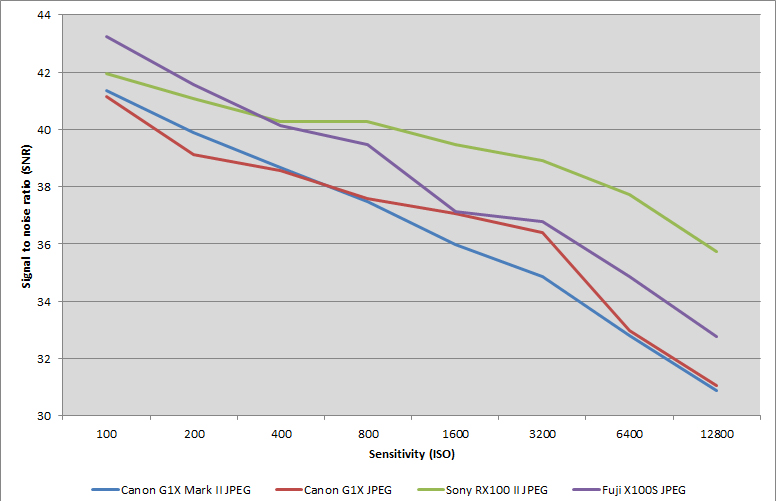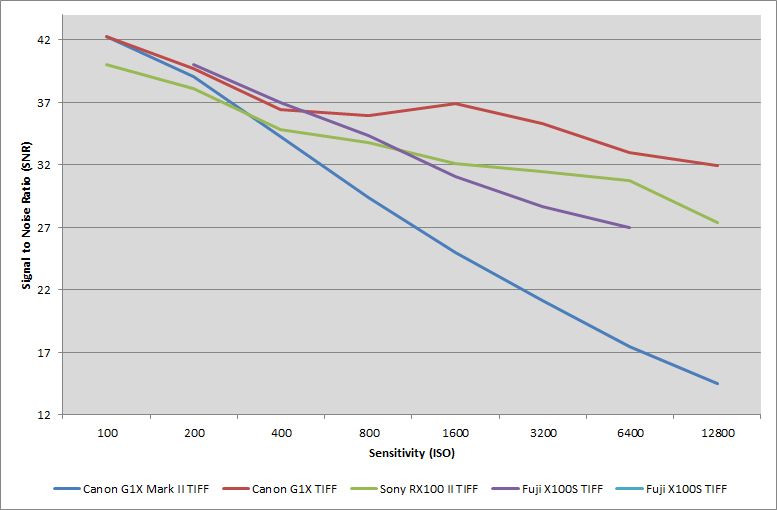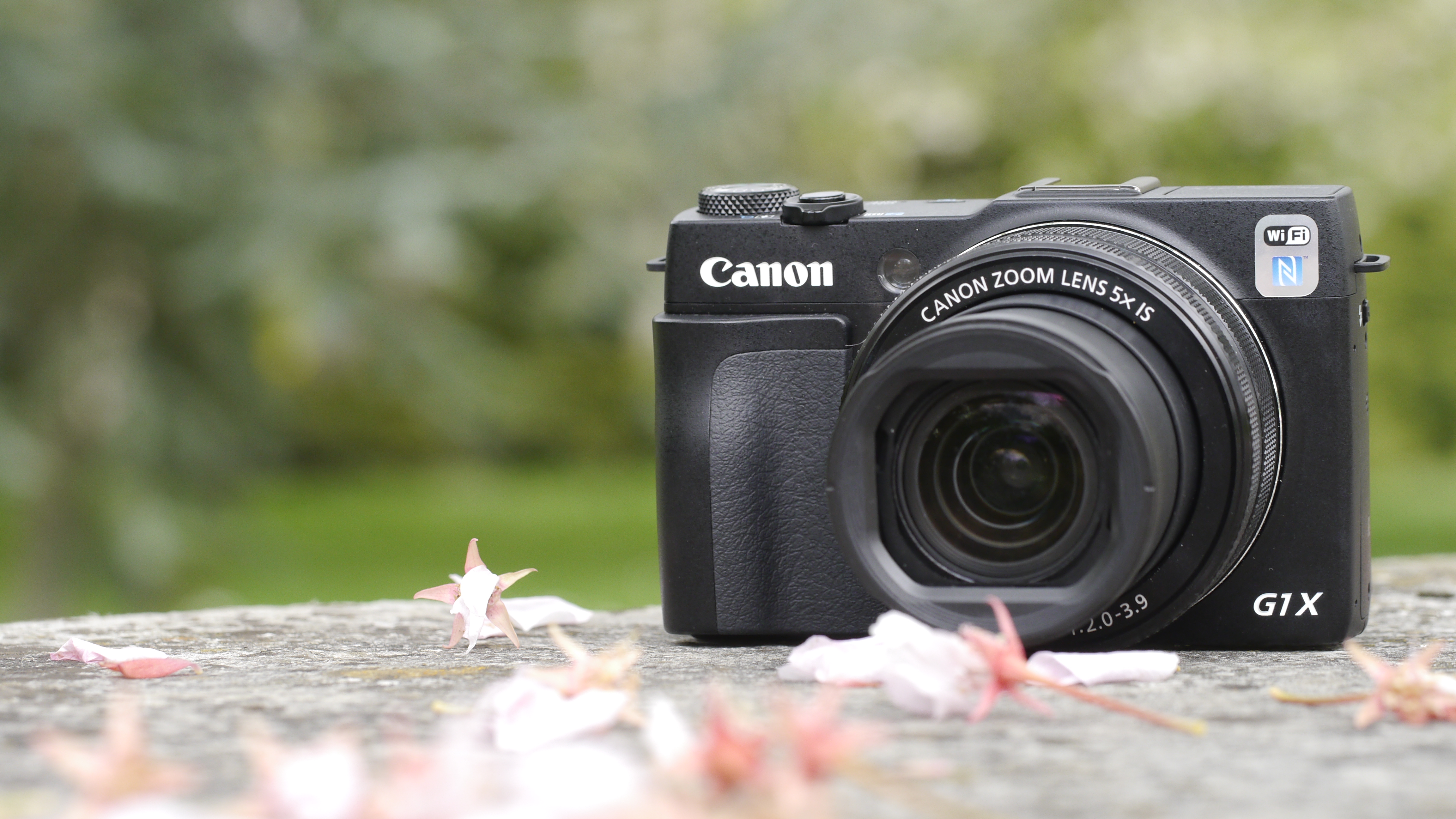Why you can trust TechRadar
We shoot a specially designed chart in carefully controlled conditions and the resulting images are analysed using DXO Analyzer software to generate the data to produce the graphs below.
A high signal to noise ratio (SNR) indicates a cleaner and better quality image.
For more more details on how to interpret our test data, check out our full explanation of our noise and dynamic range tests.
Here we compare the Canon G1X Mark II with the Canon G1X, Sony RX100 II and the Fuji X100S.
JPEG Signal to Noise Ratio

Here we can see that the Canon performs very closely to the original G1X in terms of signal to noise ratio for JPEG images, which is pretty unsurprising considering both cameras share the same sensor. On the flipside, however, both the Sony RX100 II and the Fuji X100S beat it, with the Sony RX100 II putting in the best performance as a whole.
Raw Signal to Noise Ratio

Here in the raw files (after conversion to TIFF), we can see that the Mark II appears to be beaten quite significantly by its predecessor, the G1X. However, this is probably indicative of a reduction in the amount of sharpening that is applied to files, allowing you to add your own to your own preference. Here, the Sony RX100 II puts in a consistently good performance, as foes the Fuji X100S.
JPEG Dynamic Range

For dynamic range, the graph is a little more complicated. The Canon G1X Mark II puts in an almost identical performance to its predecessor, the G1X, which again is not particularly surprising. It's a relatively flat shape across most of the ISO range, only dipping at the ISO 3200 point, which suggests a good, consistent performance. Similarly, the Fuji X100S has what appears to be a pretty flat dynamic range, but images from this camera tend to have very pleasing contrast.
Raw Dynamic Range

For raw format files (after conversion to TIFF), the Mark II puts in a better performance than its predecessor, especially at the lower end of the sensitivity scale. It beats the other cameras on test at the very lowest sensitivity (ISO 100), but its beaten by the Fuji X100S and the Sony RX100 II throughout the rest of the sensitivity range. Never the less, the graph shows that the G1X Mark II gives you plenty of scope to adjust colours and contrast in post-production when working with raw format files should you need to.
Sign up for breaking news, reviews, opinion, top tech deals, and more.
Current page: Noise and dynamic range
Prev Page Image quality and resolution Next Page Sample images
Amy has been writing about cameras, photography and associated tech since 2009. Amy was once part of the photography testing team for Future Publishing working across TechRadar, Digital Camera, PhotoPlus, N Photo and Photography Week. For her photography, she has won awards and has been exhibited. She often partakes in unusual projects - including one intense year where she used a different camera every single day. Amy is currently the Features Editor at Amateur Photographer magazine, and in her increasingly little spare time works across a number of high-profile publications including Wired, Stuff, Digital Camera World, Expert Reviews, and just a little off-tangent, PetsRadar.
